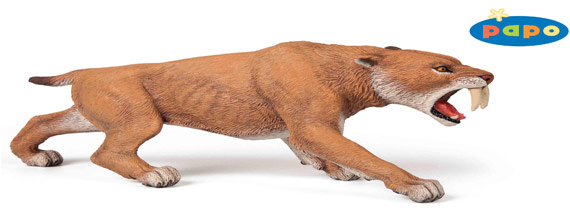Huge Haul of Prehistoric Animal Fossils from a Car Park in Los Angeles
Scientists Marvel at Insight into Ancient Los Angeles
The tar pits located at Rancho La Brea, Los Angeles (California) are world famous for their Late Pleistocene prehistoric animal fossils, revealing almost an entire ecosystem that existed between 40,000 and 10,000 years ago. For the last five years, scientists from the Page Museum (located at La Brea), have been working on the site of a nearby car park, helping to uncover a treasure trove of fossil material, including an almost complete skeleton of a giant Columbian Mammoth, the most complete fossil Mammoth of this species to be found in the area to date.
The word “Brea” is Spanish for tar, an apt description as this area was pock-marked with natural pools of asphalt that had bubbled up from the ground. Rain water would have settled on these pools of black, sticky liquid and creatures coming to drink would have become trapped and eventually preserved as fossils as they sank into the mire.
For the past few years, a team of scientists, fieldworkers and volunteers have been carefully chipping away at blocks of hardened tar to reveal a huge amount of fossil material dating from the Late Pleistocene. The site is going to be an underground car park but as it is adjacent to the La Brea tar pits it was always highly likely that a lot of fossil material would be found once the construction programme started.
Karin Rice, an excavator with the Page Museum commented:
“You’re opening up this ancient world and getting to look back in time.”
Field workers first, crated large chunks of the asphalt before they were transported back to the preparation area of the museum so that excavators could remove the fossilised bones. Care is being taken to ensure micro-fossils and plant remains are also excavated alongside large mammal bones. The data from these fossils will help scientist to build up a more complete picture of the environment and the Pleistocene eco-system.
Scientist have unearthed 23 boxed deposits, removing some 16,000 fossil bones – horses, camels, dire wolves, ground sloths, a giant jaguar and mammoths. Among the finds, partial skull material and the lower jaws of a number of sabre-toothed cat kittens, all found within a square metre of each other.
Prehistoric Animal Fossils
The picture shows a museum member of staff working on the skull of the Columbian mammoth, nicknamed “Zed” (Mammuthus columbi). The strange pair of objects looking the heels of trainers in the middle of the fossil are the giant molars of this huge herbivore.
Papo of France has recently introduced a new scale model of a Pleistocene Sabre-toothed cat (Smilodon), although we cannot be certain, we think that this model is based on Smilodon fatalis. As far as we can remember, the majority of the Smilodon material from the La Brea site is ascribed to S. californicus.
An Image of the Papo Smilodon Model
Picture credit: Everything Dinosaur
To view Everything Dinosaur’s range of Papo prehistoric animal models including Mammoth and Sabre-toothed cats as well as dinosaur models: Papo Dinosaurs and Prehistoric Animal Models.
The Smilodon genus had four species; there is conjecture whether Smilodon floridus and Smilodon californicus are true species or sub-species of Smilodon fatalis.


